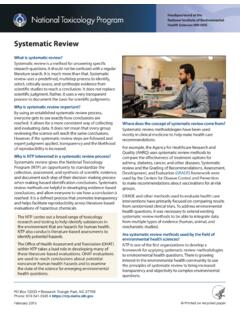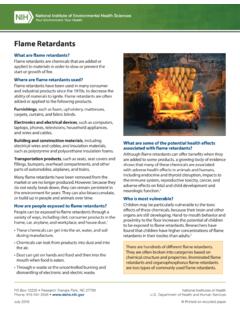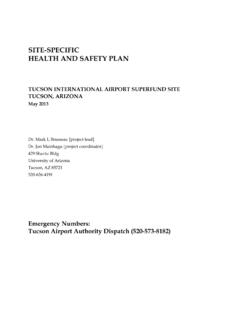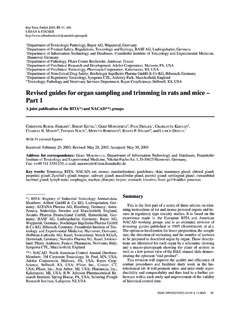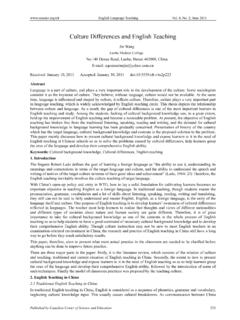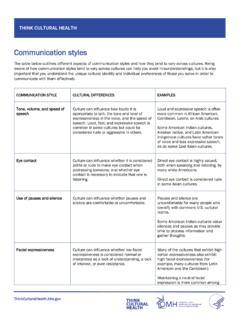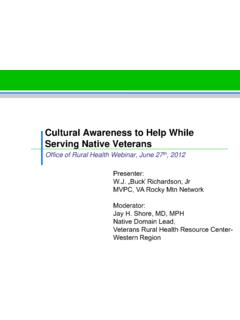Transcription of Cultural Awareness- Glossary of Key Terms
1 Acculturation: Cultural modification of an individual, group, or people by adapting to or borrowing traits from another culture; a merging of cultures as a result of prolonged contact. It should be noted that individuals from culturally diverse groups may desire varying degrees of acculturation into the dominant culture. Assimilation: To assume the Cultural traditions of a given people or group; the Cultural absorption of a minority group into the main Cultural body Culture: An integrated pattern of human behavior that includes thoughts, communications, languages, practices, beliefs, values, customs, courtesies, rituals, manners of interacting, roles, relationships and expected behaviors of a racial, ethnic, religious or social group; the ability to transmit the above to succeeding generations; culture is always changing. Culturally Appropriate: Exhibiting sensitivity to Cultural differences and similarities, and demonstrating effectiveness in translating that sensitivity to action through organizational mission statements, communication strategies, and services to diverse cultures.
2 Cultural awareness : Recognition of the nuances of one's own and other cultures. Cultural Competence: The ability of individuals to use academic, experiential, and interpersonal skills to increase their understanding and appreciation of Cultural differences and similarities within, among, and between groups. Cultural competency implies a state of mastery that can be achieved when it comes to understanding culture. Encompasses individuals' desire, willingness, and ability to improve systems by drawing on diverse values, traditions, and customs, and working closely with knowledgeable persons from the community to develop interventions and services that affirm and reflect the value of different cultures. Cultural Diversity: differences in race, ethnicity, nationality, religion, gender, sexual identity, socioeconomic status, physical ability, language, beliefs, values, behavior patterns, or customs among various groups within a community, organization, or nation.
3 Cultural humility: is a life long process of self-reflection and self-critique. Cultural humility does not require mastery of lists of different or peculiar beliefs and behaviors supposedly pertaining to different cultures, rather it encourages to develop a respectful attitude toward diverse points of view. Cultural sensitivity: Understanding the needs and emotions of your own culture and the culture of others. Ethnic: Of or relating to large groups of people classed according to common racial, national, tribal, religious, linguistic, or Cultural origin or background. Ethnicity: how one sees oneself and how one is seen by others as part of a group on the basis of presumed ancestry and sharing a common destiny .. Common threads that may tie one to an ethnic group include skin color, religion, language, customs, ancestry, and occupational or regional features. In addition, persons belonging to the same ethnic group share a unique history different from that of other ethnic groups.
4 Usually a combination of these features identifies an ethnic group. For example, physical appearance alone does not consistently identify one as belonging to a particular ethnic group. Race: There is an array of different beliefs about the definition of race and what race means within social, political and biological contexts. The following definitions are representative of these perspectives: A tribe, people or nation belonging to the same stock; a division of humankind possessing traits that are transmissible by descent and sufficient to characterize it as a distinctive human type; Race is a social construct used to separate the world s peoples. There is only one race, the human race, comprised of individuals with characteristics that are more or less similar to others; Evidence from the Human Genome project indicates that the genetic code for all human beings is identical; there are more differences within groups (or races) than across groups.
5 The IOM (Haynes & Smedley, eds., 1999) states that in all instances race is a social and Cultural construct. Specifically a construct of human variability based on perceived differences in biology, physical appearance, and behavior . The IOM states that the traditional conception of race rests on the false premise that natural distinctions grounded in significant biological and behavioral differences can be drawn between groups. The following related Terms are defined by Webster's New World Dictionary of American English, Third Edition (1991), as follows: Bias: implies a mental leaning in favor of or against someone or something. Bigotry: the behavior, attitude, or beliefs of a person who holds blindly and intolerantly to a particular creed, opinion, etc.; intolerance; prejudice. Discrimination: the act of discriminating or distinguishing differences ; the ability to make or perceive distinctions, perception, and discernment; a showing of partiality or prejudice in treatment; specific action or policies directed against the welfare of minority groups.
6 Diversity: a quality, state, fact, or instance of being different or dissimilar; difference; variety. Ethnocentrism: the emotional attitude that one's own ethnic group, nation, or culture is superior; an excessive or inappropriate concern for racial matters. Homophobia: irrational hatred or fear of homosexuals or homosexuality. Power: the ability to control others; authority, sway, influence; a person or thing having great influence, force, or authority. Prejudice: implies a preconceived and unreasonable judgment, or opinion, usually an unfavorable one marked by suspicion, fear, or hatred.
7 Racism: a doctrine or teaching, without scientific support, that claims to find racial differences in character, intelligence, etc.; that asserts the superiority of one race over another or others, and that seeks to maintain the supposed purity of a race or the races; any program or practice of racial discrimination, segregation, etc. based on such beliefs. Segregation: the policy or practice of compelling racial groups to live apart from each other, go to separate schools, use separate social facilities, etc. Sexism: discrimination against people on the basis of sex; specifically discrimination against, and prejudicial stereotyping of, women. Supremacist: a person who believes in or promotes the supremacy of a particular group, race, etc. Compiled by the Labor Occupational Health Program (LOHP) from different sources

